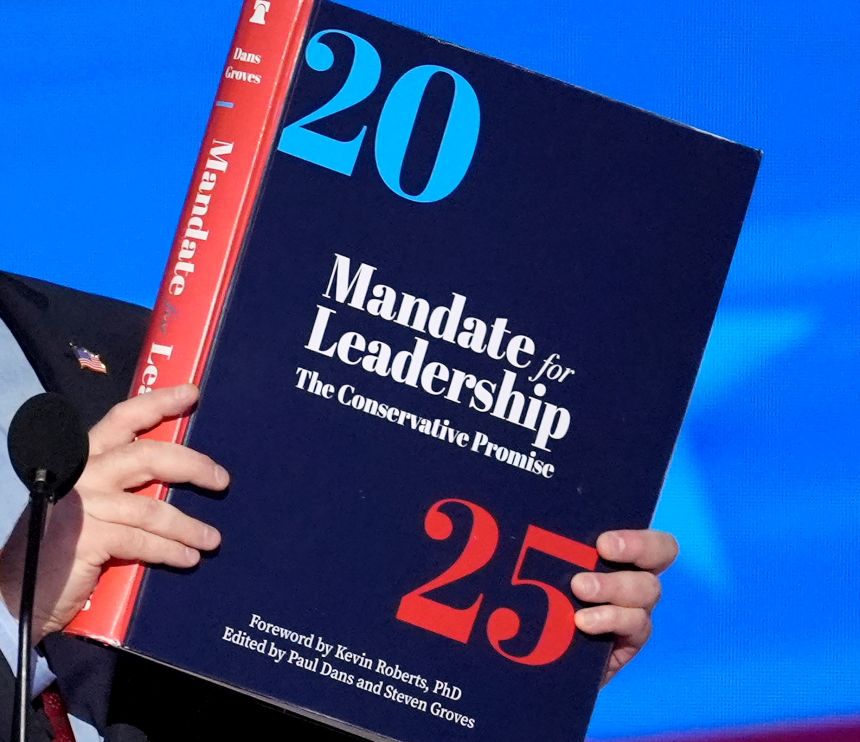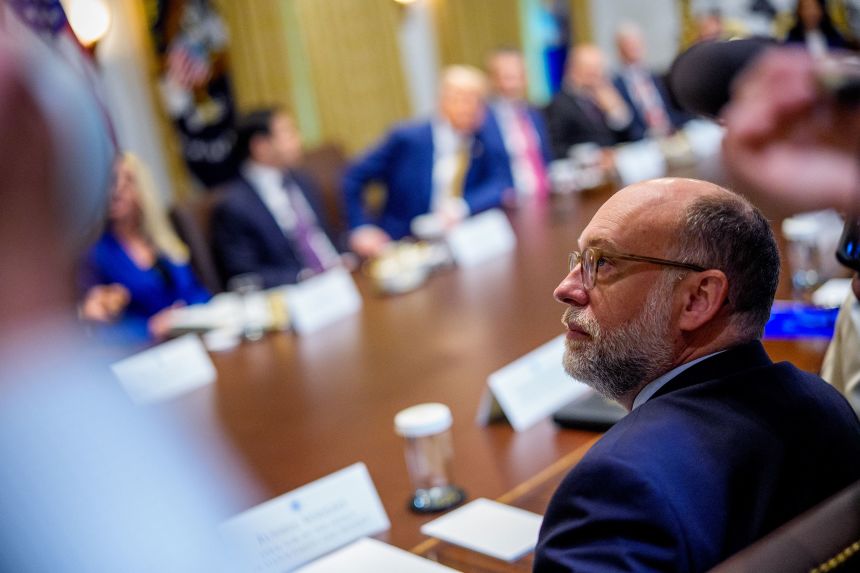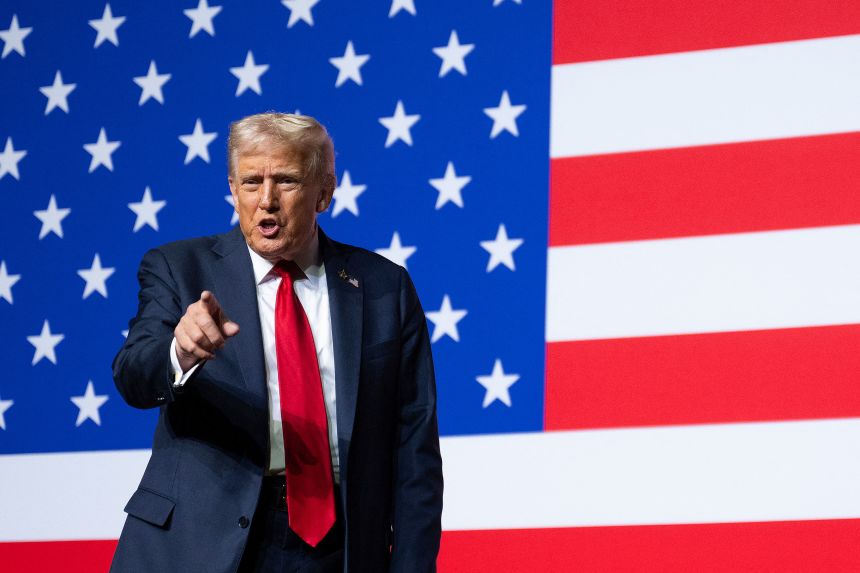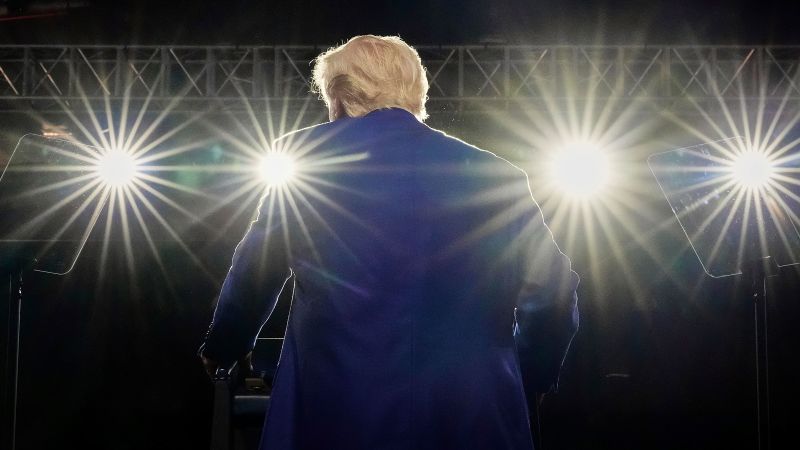A version of this story appeared in CNN’s What Matters newsletter. To get it in your inbox, sign up for free here.
They’re questions that could be asked of any number of President Donald Trump’s social media posts:
Was he telling the truth before?
Did he just not understand that thing that he said earlier?
Is he just trolling all of us?
The answer could be some combination of all three, especially in the case of Thursday’s post, and the “unprecedented opportunity” Trump says he now has to hack away at federal agencies during the government shutdown.
It has to do with the man widely seen as the architect of the shutdown: Office of Management and Budget Director Russ Vought, or as Trump described Vought in the post, “he of PROJECT 2025 Fame.”
That’s the same Project 2025 that Trump repeatedly distanced himself from during last year’s presidential campaign.
“I have nothing to do with Project 2025,” Trump said during the presidential debate. “I haven’t read it. I don’t want to read it, purposely. I’m not going to read it.”
Vought’s role as one of the co-authors of Project 2025 is well-known. The 900+ page plan published by the Heritage Foundation is a field manual for a conservative president to radically remake the US government.
Vought’s expansive views on presidential power have made him the White House official most synonymous with Project 2025.
Trump and Vought were set to meet on Thursday to discuss permanent cuts Trump says they could carry out during the ongoing government shutdown— cuts that were teed up by a memo Vought sent last week directing federal agencies to submit detailed plans for mass layoffs.
It’s the kind of government overhaul envisioned by Project 2025, which last year Trump described as something written not by past and future aides of his, but rather just by “a group of people that got together.”
Some of the ideas were good, he said, and some bad.
“But it makes no difference,” Trump said in the debate. “I have nothing to do – everybody knows I’m an open book. Everybody knows what I’m going to do. Cut taxes very substantially. And create a great economy like I did before.”
It’s not surprising that candidate Trump would distance himself from the plan. It was, as CNN’s Aaron Blake notes, an albatross. Most Americans opposed it in polling.
But then, after his election, a not-so-curious thing happened. Much of Trump’s second presidency has looked like it was copied directly from Project 2025.

CNN’s Steve Contorno and Casey Tolan wrote this for CNN’s Investigates the same month Trump took office:
A CNN analysis of the 53 executive orders and actions from Trump’s first week in office found that more than two-thirds – 36 – evoke proposals outlined in “Mandate for Leadership,” Project 2025’s 922-page blueprint for the next Republican president. The overlap includes early steps taken by Trump to execute some of his most-touted pledges: cracking down on illegal immigration; dismantling diversity, equity and inclusion initiatives; and rolling back environmental restrictions on oil and gas exploration.”
There is plenty of additional crossover, including skepticism of the Federal Reserve and efforts to drastically cut back on the number of federal workers. KFF did a detailed review of Project 2025 recommendations that suggested it was a prologue for multiple Trump policies, including funding cuts to the National Institutes of Health and the dismantling of USAID.
In reporting their story, Contorno and Tolan talked to Paul Dans, who oversaw Project 2025 at the Heritage Foundation, and sounded giddy in those early days of Trump 2.0.
“This is exactly the work we set out to do,” Dans said in January. “It’s still in the early first stages of bearing fruit, but we wanted to make sure the president was ready to hit the ground running on day one. The rapidity and the depth of what they’ve rolled out this quickly is a testament to the work done in Project 2025 and other presidential transition projects.”
Dans has since left the Heritage Foundation and is now launching a primary challenge of Republican Sen. Lindsey Graham in South Carolina.
The Heritage Foundation did not respond to CNN’s requests for comment on the role Project 2025 has played in Trump’s second term.

Many Project 2025 contributors now have jobs in Trump’s administration.
There’s Vought, obviously. And Brendan Carr, the FCC chairman who wrote the Project 2025 chapter on the FCC.
Tom Homan, Trump’s border czar, is listed as a contributor. So is Peter Navarro, Trump’s trade advisor, who also served in Trump’s first term and went to jail rather than testify to Congress about the January 6, 2021, attack on the US Capitol. Trump’s SEC commissioner, the crypto enthusiast Paul Atkins, is also listed as a Project 2025 contributor.
EJ Antoni is a Project 2025 contributor. After Trump fired the Bureau of Labor Statistics head following a jobs report he didn’t like earlier this year, he nominated Antoni. That nomination was withdrawn this week after a CNN KFile investigation uncovered Antoni’s since-deleted Twitter account that included sexually-degrading and bigoted attacks.
Many authors who aren’t currently in Trump’s second administration played a role in his first.
Which is all well and good. In that way, Trump’s right that he was an open book about his priorities.
You didn’t have to read Project 2025 to know that Trump would engage in a mass deportation effort.
Trump himself recorded a series of Agenda47 campaign videos, which have been equally predictive of his second term agenda, but with much less specificity.
And it’s also true that the document includes a large number of proposals Trump’s administration has left on the table.
The problem for Trump, and the big question about why he would suddenly name check Project 2025, is that he promised he hadn’t read it and wouldn’t read it.

It’s possible Trump did not want to be associated with Project 2025 for a much simpler reason. As anyone who has watched a televised Trump Cabinet meeting can see, he likes to be seen as the master of his kingdom. His secretaries talk about his individual greatness and his ideas.
Listen to a speech these days and he’s likely to say, as he did recently to the UN General Assembly, about himself:
“I’m really good at this stuff,” or “I was right about everything.”
It wasn’t his administration that ended wars, as Trump likes to brag, but him alone.
“I have ended seven unendable wars,” he said at the UN.
He saved the economy, he’ll say. This is just a guess, but that doesn’t sound like the kind of man who wants to share credit with anyone, much less the Heritage Foundation, even if it did write the script for his second term.
